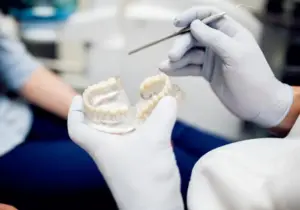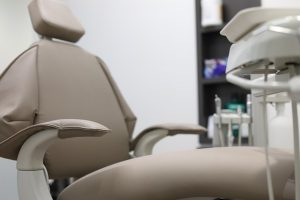There is now a choice for dental implant material. Dental implants have historically been made of titanium. More recently, zirconium has been used. Both are classified as a transitional metal; however, when zirconium is processed and zirconium oxide (Zirconia) is made, this material has the properties of a ceramic rather than a metal. Past generations of zirconia implants have had limitations due to increased risk of fracture and location of implant placement, since they used to be a one piece unit. Two-piece zirconia implants have been available here in the US for a number of years, but the design of the available implants did not meet Dr. Puckett’s criteria to validate use.
In January 2020, Straumann, a leading dental implant company, received FDA approval for release of the Snow ceramic implants. The Snow ceramic implant system is the only 100% ceramic system available (metal- and plastic-free) – the drills, implants, abutments, and setscrews are all zirconia. This system also meets Dr. Puckett’s criteria for both surgery and restorative criteria. Additional information for the Snow ceramic implant can be obtained via their website.
Both titanium and zirconia implants have success rates of 98+%.
Titanium and Zirconia Dental Implants Advantages & Disadvantages
Advantages and potential disadvantages are shown below for comparison:
Titanium (Advantages)
Long track record
Essentially no risk of fracture
More parts available
Zirconia (Advantages)
More aesthetic
No chance of metal allergy
May have lower risk of gum inflammation
—
Titanium (Potential disadvantages)
Possible issues with autoimmune disease
Possible galvanic interaction
Small risk of gum inflammation
Zirconia (Potential disadvantages)
Slightly more expensive
Long-term studies not yet available
Fewer parts available currently










